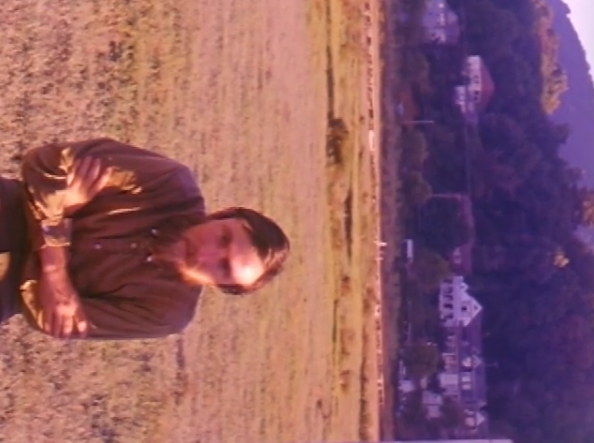“Circus Savage: A Walking Into The Becoming” By John Davis
“The Screen flashes into light and with the picture consciousness passes across the world. The lie of the stationary photography is corrected, time is denied, partially at least, and space is unable to boast and swagger as it loves to do. The cinema frees and extends the consciousness, restores the past, and sets distance close beneath the eyes. Only the watching self remains, pregnant symbol in the darkness.”
– Algernon Blackwood
Circus Savage is filmmaker Lawrence Jordan’s confluence of moving image and sound. It is a twelve-hour assemblage of personal vision, and a privileged window into a life uncompromisingly dedicated to poetic investigation. The film itself is comprised of Jordan’s own outtakes, unfinished works, appropriations and various odds and ends. As a collagist masterwork in its own right, the soundtrack was culled from hundreds of hours of film sound, 1/4” magnetic tape and vinyl LP’s that Jordan collected over the years. While he is neither a sound artist nor a musician in a formal sense, watching Circus Savage reveals that five decades of creating time-based art has nurtured in him a lyrical adaptation to sound as well as film. From the start, discordant pairings of picture and sound prove unsteady groundwork that quickly detours our expectations, leaving us to fend for ourselves with regard to any understanding of what the film is all about. Some of the sounds are recognizable, some are not, but like their image counterparts, they question each other in a constant back and forth that leaves us little room for intellectual musing. However hard we seek to analyze the work, this is a sensory film, and viewers are best served by allowing it to envelop rather than inform.
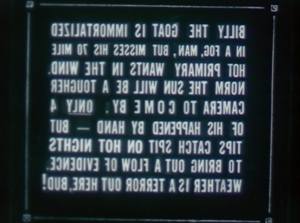
As might be expected, there are less compelling points in the film where the rhythm falters, where extended shots of travel excursions, garden sequences and archival footage seem to meander aimlessly. In fact, the very first ten minutes of the work, extracted from Jean Cocteau’s La Belle et la Bête, is taken out of order, disarranged, and appears nonsensical. Though aligned with sounds that charge the clips with a fervent power (in this case canned sound effects), longer passages like these can appear less vital. When taken as a whole, however, these spans serve an important function, and provide the attentive viewer an opportunity to meditate on the breadth and scope of the work, to let the experience percolate in the subconscious, much the way the passing of time, memory and nostalgia might. That said, the film should be experienced rather than endured, and Jordan has stated that he expects people to come and go during screenings, to take the work in parts rather than as a whole. In fact, Jordan himself has never viewed the film from beginning to end.
I met Lawrence Jordan in 1998 while taking one of his film classes when I was a graduate student at the San Francisco Art Institute. It was the first experimental film class I had ever taken, and although I had shot film over the years, his class revealed to me a deeper world of avant-garde cinema, and fundamentally changed the way I thought about film as an art form. Then, in 2007, while I was working as a film projectionist at the San Francisco Museum of Modern Art, I had the good fortune to catch up with Jordan while projecting a newly struck 35mm print of his film Our Lady of the Sphere, which was being shown in conjunction with the Joseph Cornell exhibit Navigating the Imagination. Around that time I had a cassette of my own music released, and gave him a copy as an example of what I had been up to. I didn’t think much about it until I got a phone call from him some months later saying he was working on a new film called Cosmic Alchemy that he was trying to find the right soundtrack for. He went on to say that he’d listened to the tape I’d given him while doing some editing for the film, and was struck with how well the music and images worked together. He asked if I wouldn’t mind letting him use some of it for the film (I pretended to think about it for a minute), which of course I agreed to.
That opportunity wound up deepening our friendship and began an ongoing collaboration that now includes soundtracks to four films, a live music/film performance, as well as an upcoming film and soundtrack due out in July 2014. The exchange also provided me a window into Jordan’s creative process. He explained that the unsolicited act of me sharing my music was a preferred mode for him to choose a soundtrack. He went on to say that in an unconscious sense, things revealed themselves to him when they were ready, as opposed to him having to make premature choices about things when they weren’t. He said that this positioning himself to chance encouraged providence in his work, and that it was his desire to let the subconscious drive his artistic process. He further explained that my music had found the film at the right moment, and his choice, as it were, was an involuntary one that allowed the music to become a part of the film. As esoteric as that may sound, it is in fact a functional belief system that informs all of Jordan’s work, if not most expressly in Circus Savage.
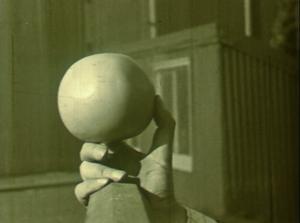
I had the good fortune to project Circus Savage at the now defunct Gallery Extraña in Berkeley in 2009. Jordan, Brecht Andersch and myself ran the film in shifts for the full twelve hours, giving everyone there an opportunity to experience the work the first and only time it has ever been shown in its original 16mm format (as of this writing). The film consists of thirty-two twenty-minute film reels, as well as thirty-two twenty-minute sides of cassette tape (one twenty-minute side per film reel). Jordan’s only instructions were to take our time, to be sure and hit play on the tape machine approximately at the beginning of each reel, and to keep the cassettes and film reels in order. That was basically it. In addition to the film reels and cassette tapes (organized in a small case with drawers), Jordan brought his own 16mm projector, cassette player, McIntosh amplifier and two large speakers from his home studio in Petaluma.
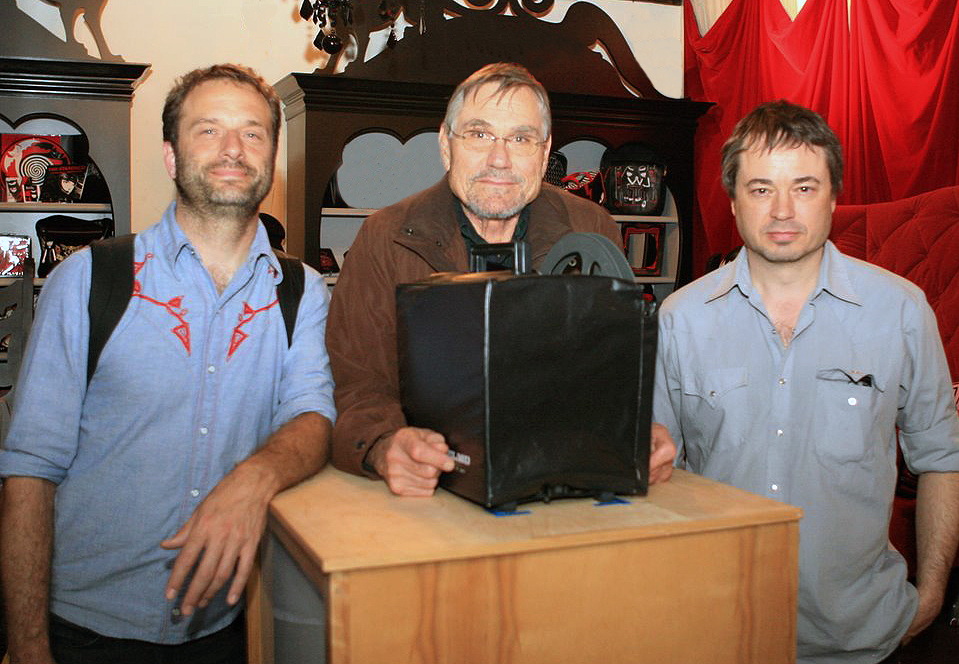
When I first heard about Circus Savage I was skeptical that a twelve-hour experimental film of outtakes and unfinished works would hold up. However, I was quickly lured by its array of images and sounds, and I was struck by the fact that here was a well established filmmaker in his late career going back over a fifty year stockpile of accumulated footage to uncover it’s relevance as a new work of art. That alone is interesting, if not unprecedented, but what I found even more engaging, and what I continue to marvel at, is the tension between what appears as a seemingly random collection of forms, but is in fact Jordan acting as a divining rod for his own subconscious truth. As the film unfolds, we become untethered, drifting well beyond the reassuring harbor of any narrative anchor. This experience is disconcerting, even uncomfortable at times, but it is also liberating and charged with the excitement that comes with the unexpected. Despite all these disjointed excursions and disparate forms, it is reassuring to know that Jordan has spent most of his life embracing the subconscious as a guide through the artistic process. Jordan’s work is as much a doorway to his subconscious as it is to our own, and Circus Savage is perhaps his most well crafted roadmap for encouraging that journey. Jordan further explained his process to me as a walking into the becoming, which he said was taken from a Taoist concept that he applies to both his life and his art, and is rooted in “simply letting things happen, not forcing or analyzing, just allowing”.
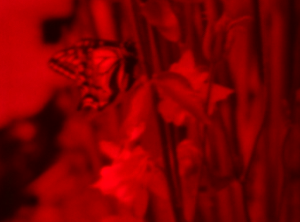
Through its collection of flawed experiments, playful artistic gestures, outtakes, archival footage, and various intimate flights of fancy, Circus Savage invites us to engage fragments of a personal history. However, in an inversion of what we might anticipate, the material is decontextualized and stripped of sentiment, used less as a diaristic exposé, and more as objective fodder for Jordan’s creative explorations. This is primarily the result of the ways the sound impacts the images and vice versa, each serving as a dialectical counterpart to the other. What remains conspicuous is the familiar mirror with which to reflect our own experiences, but what also emerges is the deep humanness that comes with freely sharing one’s creative process, especially one so deeply rooted in subconscious experimentation. Additionally, Jordan’s using these expositions of film and sound as source material (some of which I suspect revealed long dormant emotional states) shows a reconciliation of, and coming to terms with the past, reinforcing a highly evolved spiritual and artistic equilibrium.
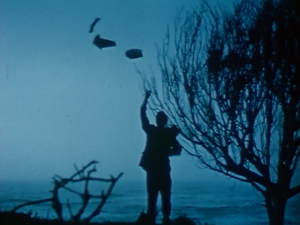
I experience the film as one largely about love. Not just the love Jordan freely demonstrates for his partner the poet Joanna McClure (who features prominently throughout the film from the 1950’s through the 1990’s), but also a love for the senses, the mind and creative expression. Simultaneously, I see the film as being about chance, both in terms of the way Jordan assembled the work, but also as an analogue to the unexpected reversals and changing currents that impact our lives, sometimes rewarding, other times disastrous. If you let it, the work is an excursion for the senses, promoting unique discoveries that can sometimes feel custom tailored to our own personal fancies.
In the end, Jordan is the experimenter experimenting with the experiment, trusting the viewer to fill in gaps, loosen expectations, and ride alongside the mystical portals of celluloid magic and it’s companion sound. Instead of recapitulating this trove of past sounds and images, Jordan re- experiments with them in order to create something new. Rather than use the past as a private memory, he shakes off its emotional weight, and allows himself (and us) to explore it in the same way he would any other source material. Diving into this personal archive and letting it choose its own final form is much the way Jordan has approached his life, and it serves as a good example of what it means to let go and be free of the suffering that comes with control, to become liberated agents on a path that has no beginning, no end, or any outcome we could possibly predict.
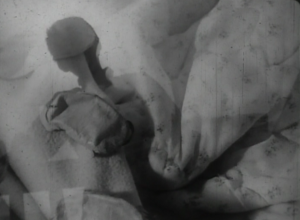
Return to Issue 3 Table of Contents
